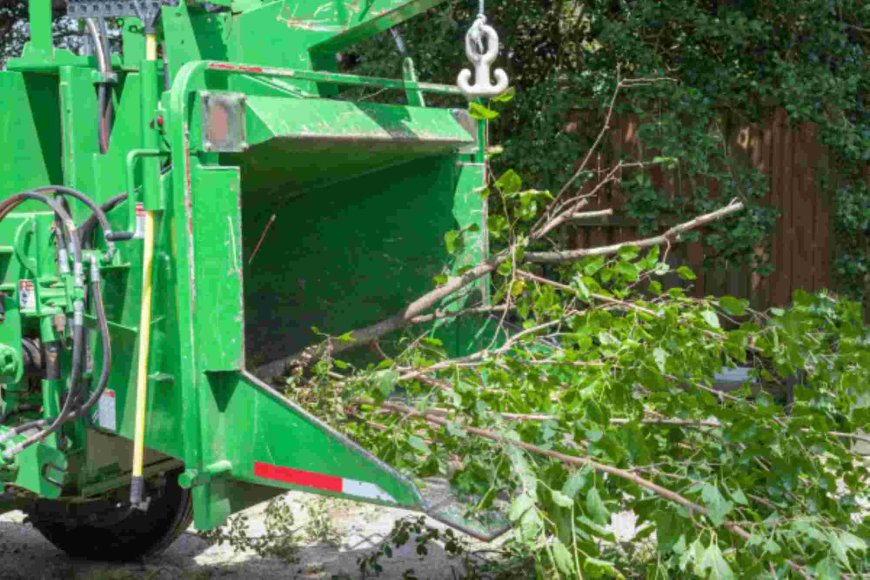Emergency Tree Removal: What You Need to Know to Stay Safe and Protected
Emergencies are unpredictable—but your response doesn’t have to be. Emergency tree removal is about acting fast, staying safe, and preventing more serious problems. Whether it’s a storm aftermath or a sudden collapse, having a plan in place and the right pros on call makes all the difference. Don’t ignore the warning signs—protect your property and peace of mind by responding quickly and wisely.

Emergency tree removal is the immediate response to a tree that poses an urgent threat to safety, property, or public spaces. Whether its after a storm or due to unexpected tree failure, its all about quick action.
Why Its More Common Than You Think
With unpredictable weather and aging urban trees, emergency tree situations are on the rise. Knowing how to respond can save you stress, money, and even lives.
Common Causes for Emergency Tree Removal
Storm Damage
Heavy winds, lightning, snow, or rain can weaken branches or uproot entire trees, turning them into dangerous obstacles.
Diseased or Dead Trees
Trees weakened by disease or rot can collapse without warningespecially in high winds or under pressure.
Fallen or Uprooted Trees
A fully downed tree across your driveway or power lines is a clear emergencydont wait to act.
Trees Posing Immediate Danger
Overhanging limbs, cracks in trunks, or visible leaning near buildings all spell urgent risk.
Signs You Need Emergency Tree Removal
Leaning or Cracked Trunks
If your tree suddenly starts leaning or you notice a split in the trunk, its a red flag.
Large Limbs Hanging Over Structures
Branches hanging above your home, garage, or carport? They could fall at any moment.
Roots Lifting or Damaging Foundations
Uplifted sidewalks or cracked concrete? Your tree might be destabilizing your propertys foundation.
Tree Struck by Lightning
A lightning-struck tree is structurally compromisedeven if it looks okay. It may split or fall without notice.
Why Emergency Tree Removal is a Priority
Protects People and Property
Falling trees and branches are one of the top causes of property damage during storms. Removing the threat protects your family and home.
Prevents Further Damage
Waiting can make the damage worseespecially if the tree is tangled in wires or leaning against your roof.
Ensures Safety During Storms
Clearing dangerous trees before a storm hits can help avoid life-threatening situations.
Who to Call for Emergency Tree Removal
Certified Arborists
Arborists are tree professionals trained to assess and safely remove hazardous trees.
24/7 Tree Service Companies
Emergency tree services operate day and nightdont wait until morning if theres a threat now.
Local Authorities (for public hazards)
If a tree falls on a public road or involves power lines, notify your city or utility company immediately.
What to Expect During Emergency Tree Removal
Fast Assessment
The crew arrives quickly to evaluate the threat and determine the safest removal plan.
Safety Measures
Theyll secure the area, wear proper gear, and may use cranes or lifts if needed.
Removal Process
Using saws, ropes, and heavy equipment, theyll remove the tree section by section to minimize risk.
Clean-Up and Disposal
Most services include hauling away debris and cleaning the site once the jobs done.
Costs Involved in Emergency Tree Removal
Factors That Affect Pricing
-
Tree size and species
-
Accessibility
-
Equipment required
-
Time of day/night
-
Danger level
Average Cost Range
Emergency removals can range from $500 to $2,500+, depending on the severity of the situation.
Insurance Coverage
Many homeowner policies cover removal if the tree damages a structure or blocks access. Always check your policy details.
Insurance and Liability Considerations
Does Homeowners Insurance Cover Tree Removal?
Yesif the tree caused damage to a covered structure or driveway. Not usually if it falls harmlessly in your yard.
What If the Tree Falls on Your Neighbors Property?
If the tree was healthy and fell due to an act of nature, you're typically not liable. But if it was neglected or dead, you might be.
DIY vs. Professional Emergency Removal
Why DIY is Dangerous
Unstable trees, power lines, and the need for heavy equipment make this job too risky for most homeowners.
Benefits of Hiring a Pro
Pros have the skills, gear, and insurance to handle high-risk situations quickly and safely.
How to Prepare Before the Emergency Happens
Regular Tree Inspections
Hire an arborist annually to spot signs of disease, decay, or instability.
Pruning and Maintenance
Keeping trees trimmed prevents overgrowth and weak branches.
Knowing Who to Call in Advance
Have a trusted emergency tree service saved in your phone so youre not scrambling in the dark.
What NOT to Do During a Tree Emergency
Dont Try to Climb the Tree
It may be unstable and dangerouslet the professionals handle it.
Dont Use Chainsaws Without Training
Chainsaws are powerful and unforgiving. Emergency work isnt the time to learn.
Dont Delay Calling for Help
Waiting can worsen damage, increase costs, or endanger lives.
Conclusion
Emergencies are unpredictablebut your response doesnt have to be. Emergency tree removal is about acting fast, staying safe, and preventing more serious problems. Whether its a storm aftermath or a sudden collapse, having a plan in place and the right pros on call makes all the difference. Dont ignore the warning signsprotect your property and peace of mind by responding quickly and wisely.
FAQs
1. How quickly can emergency tree removal services respond?
Most services offer 24/7 response and aim to arrive within 13 hours, depending on location.
2. Will my insurance cover emergency tree removal?
Yesif the tree caused damage or blocks access. Check your policy for specifics.
3. Can I be held liable if my tree damages my neighbors property?
Only if the tree was neglected or already in poor condition.
4. Whats the difference between emergency and routine tree removal?
Emergency removal is unplanned and urgent due to safety threats. Routine is scheduled and usually preventive.
5. Should I remove a tree thats leaning but hasnt fallen yet?
Yesif its suddenly leaning or near structures, it may need immediate removal before it causes damage.




















